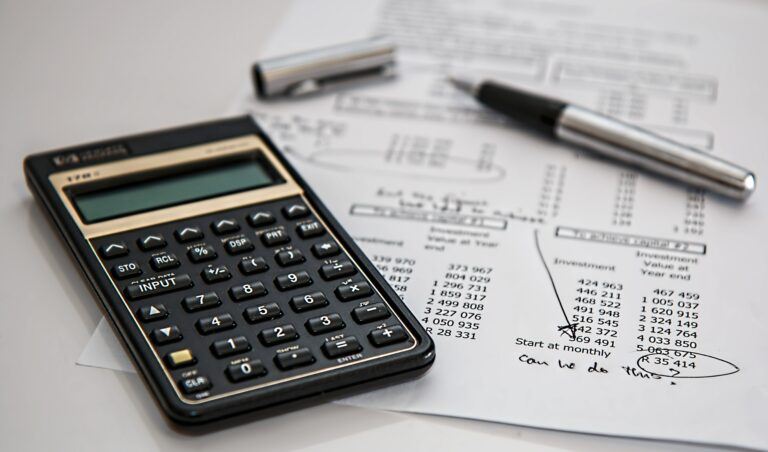Just having read the title, you can already draw a couple of conclusions:
- A tokenization platform is an accounting system.
- It is somehow different from the traditional ones.
Let’s first address the question then — “What is traditional accounting?”
Traditional accounting
There is no way around accounting.
It is essential in any sphere, service or business. Banks, eBay-like services, any social networks, governments (public registries) etc. – they all need to maintain the accounting of certain data.
The response time and capacity of such systems are usually high because they are managed by a single party — allowing for quite rapid decision-making. Obviously, this party takes the responsibility to do everything according to the rules, while we, in our turn, come to trust it. Thankfully, there is such a thing as reputation, which mostly makes us confident as to the honesty of the organization that’s maintaining the accounting system.
There are however, alternative accounting systems that are built in such a way as to minimize the trust factor – because are managed mutually. They are mostly based on blockchain technology and are known as tokenization platforms.
Tokenization in a Nutshell
Tokenization is the process of changing the way accounting and managing of assets are provided so that every asset unit is represented by its digital analogue — a token.
Imagine you’ve visited a bakery that has some of the best buns in the city.

Obviously, it has a very good reputation among its clients. Later, you find out that the owner of this bakery decides to create an accounting system, in which a certain number of tokens will be released (issued) – where one token is a digital obligation for one bun.
Now, the owner spreads these tokens out over a number of popular trading platforms.
Having considered the popularity of the bakery, you might choose to buy some tokens.
After all, you definitely plan to visit the bakery soon and get a bun. So, you buy a token. Having bought one token, you can technically claim that you hold the futures for the bakery’s bun.
This in a nutshell, is what tokenization is – it is a digital right to something.
ICO tokens are a form of tokenization, but tokenization is a far broader concept. Let’s turn now to a more complex concept — the platform of tokenization.
Tokenization Platforms
A Tokenization platform is the collection of components that ensure the correct realization of the tokenization process. This definition however, doesn’t explain too much in and of itself.
In order to understand the concept, we should concentrate on how specifically the tokenization process is provided. It includes a number of criteria – all of which influence the resulting properties of the platform:
- Governance: As mentioned above, decisions in and about the accounting system tend to be made mutually. “In the accounting system” — is related to transaction confirmation; “about” — connotes general upgrades to the system.
- Token issuance: It can either be accomplished in a centralized manner (dependent on the intention of those who fulfil it) or be decentralized (according to common rules – for all independent parties).
- Audit: This is where tokenization platforms already have a significant advantage. Where an accounting system was built using a blockchain, it can achieve transparency of processes, which can allow regulators (tax or governmental agencies, for instance) an auditor-node – allowing for automatic examinations in real time. No more annual inspections or painful sudden audits.
- Data storing: Data is simultaneously stored on all the servers of independent parties. If you try to backdate any transaction — your database will no longer fit with that of others – and it will be noticed. The greater the number of independent validators — the more reliable the accounting.
- Registration and restrictions: In centralized systems, you always have registrations. It is mostly carried out in order to restrain users’ activities – in other words – impose censorship. If a sufficient level decentralization is achieved, the censorship imposition from the side of specific parties is practically impossible – because a common consensus is reached by the community of validators.
So, in summary:
- Traditional accounting systems are managed single-handedly or by a limited group of people — they are centralized.
- A tokenization platform has partial or complete decentralization.
These platforms can vary, however, in the extent to which they are decentralized:
Bitcoin is a good example of a completely decentralized and independent financial system, where users are in full control of their funds.
The bakery example above is a good example of a mixed system – where some processes are centralized – the issuance of bun tokens, for example – but some are still auditable – the platform is partially decentralized.
Technically, you can build a centralized tokenization platform, but it would be like a smartphone with no Internet access — it can still make calls, it is still more functional than an old telephone set, but its potential is not fully unleashed.
Blockchain’s merit
Blockchain is a method of organizing a database so that it allows for storing and reconciling data changes among independent parties: the whole history of changes has a strict sequence order, which cannot be altered without the knowledge of the rest of the holders of the database. Such a system can either be:
-
Permissionless: You don’t need access permission to join it.
- Permissioned: You need permission in order to participate in certain processes within the system. Some dislike such an approach. but it can depend on your requirements. For example: You’ve built a blockchain-based platform in which only your business partners or other related entities can interact, where you don’t want outside parties)
A distributed permissionless environment clearly provides many advantages – especially the fact that you can guarantee with almost certainty that collusion is impossible.
Even in a centralized environment, howeverm where transactions are confirmed by a single party, blockchain still has certain advantages:
- Regular users of the system can verify the authenticity of the database (to be exact, they can have proof of being cheated.)
- Synchronize data among the unlimited number of servers in real-time (this excludes a single point of failure of the whole system).
- Easy backup of the database.
Summarizing: the capabilities of a tokenization platform
In practice, all the features we have discussed can allow for the creation of an accounting system with a transparent process of asset management.
The owner of the token in such system will be able to easily prove his ownership. Any balance shift will take place only if it is confirmed by a number of independent validators, which means that it should be correct by all parameters: tokens are sent by the actual owner, the amount sent doesn’t exceed the overall balance amount, etc.
It may sound trivial, but this is actually very significant.
Violators are almost powerless for a very simple reason — you cannot fool anyone when you’re in the public eye. In such a way, a properly built system may provide for the almost unassailable safety of users’ funds and, of course, the authenticity of the whole database.
The greater the extent of decentralization, the more the system is fault-tolerant.
If there is one server, its breakdown obviously means the crash of the whole system.
Having a decentralized network, the data is being continuously synchronized among the hosts of the system. Even the breakdown of some of the hosts doesn’t affect the operation of the whole accounting system.
Here to Stay
Tokenization platforms are a new approach to asset management.
It makes it simple and accessible. Blockchain allows for a simple check of data integrity and an easy-to-perform audit in real time. The system is being continuously synchronized, which means users always see the latest data, which is available for all.
Having a sufficient level of decentralization means that such an accounting system is more resistant to any external forces because the protocols of the system simply don’t allow for it. The potential for corruption is reduced – because every action is recorded, you cannot go unnoticed.
Tokenization platforms are undoubtedly here to stay.









